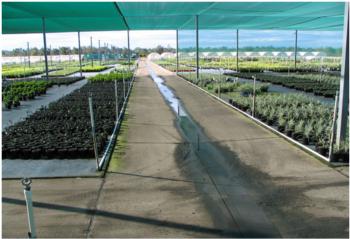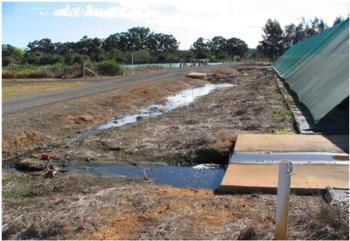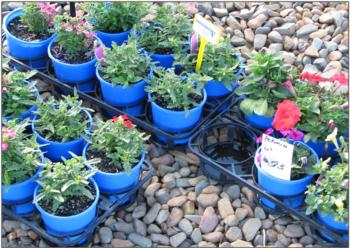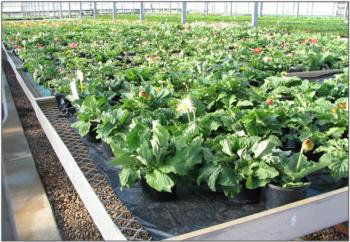Spring 2011: How Aussie growers are addressing water issues, Part II
Regional Report Ventura and Santa Barbara Counties by Julie Newman
To learn firsthand how the Australian nursery industry is addressing water issues, I visited with staff at the Nursery and Garden Industry Association, Queensland (NGIQ) and toured nurseries in the Brisbane-Gold Coast area of Australia last September as part of my sabbatical leave. The area I visited is along the south coast of Queensland, where the majority of the population resides. The climate is mild and conducive to the production of a broad palette of plants, similar to coastal California.
NGIQ was formed in 1934 as a professional organization for plant growers in Queensland, and is aligned with the national association, Nursery and Garden Industry Australia (NGIA). I met with John McDonald, development manager, and Steve Hart, farm management systems officer, who coordinated tour arrangements to nurseries and research project sites. John and Steve have extension roles similar to the UC farm advisor in providing technical on-site assistance and in developing and implementing educational programs. They do not conduct their own research but do coordinate research projects, especially with the Queensland Primary Industries and Fisheries. Their positions are funded by industry with matching funds from the Queensland government.
An emphasis of the NGIQ program is staff commitment to the Industry Accreditation Scheme Australia (NIASA), a national program for the adoption of best management practices for production nurseries and growing media manufacturers. John and Steve provide accreditation for nurseries that implement the NIASA program and help growers achieve certification through the EcoHort program. (Details about the NIASA and EcoHort national programs were described in my last report: http://ucanr.org/sites/UCNFAnews/Archived_Stories/Regional_Reports_Archive_Winter_2011/
All the nurseries that I visited are NIASA accredited and EcoHort certified, and have implemented progressive water management practices to improve water use efficiency. These nurseries also recycle irrigation and storm water. (In fact, a 2006 National Water Use Survey conducted by the NGIA showed that more than half of Australian production nurseries recycle water.) Furthermore, these nurseries have implemented IPM programs that incorporate biological control to reduce pesticide loads.
One of the nurseries I toured, Pohlman's Nursery, is the largest independently owned nursery in Queensland and one of the largest in the country. This family-run business is comprised of 150 acres and employs up to 185 people during the peak season. Significant economic returns over the past decade have been driven by three core activities: production and packaging automation, climate control technology for producing new plant varieties, and a strong emphasis on brand marketing.
Pohlman’s Nursery has a highly organized agritourism program. They offer guided train rides through the nursery for bus tours, garden clubs and others, displaying numerous best management practices, which include recycling water (fig. 1) as well as container sleeves (fig. 2) and capillary mats to absorb drainage water from pots on benches. The nursery tour includes packages for tea and lunches at the nursery at reasonable rates (about 5-10 U.S. dollars per person). Showcasing their environmental stewardship program has helped to build strong community support. Moreover, while Pohlman’s Nursery is primarily a wholesaler, they have a retail outlet where tour groups can choose plants and gifts straight from the production nursery.


Fig. 1. Excess irrigation water from Pohlman’s Nursery drains to a collecting pond (lower photo) where it is treated and reused for irrigation. Photos by J. P. Newman.


Fig. 2. Pohlman’s Nursery uses specially-designed container sleeves and capillary mats (below) to mitigate leaching of fertilizers and pesticides into the ground. Photos by J. P. Newman.
Improvement of water management is a major objective of the NGIQ technical program because drought is common: from 2001 until 2008, Brisbane and surrounding areas experienced the most severe drought in over a century. However, during late December and early January, unprecedented rainfall and flooding occurred over much of the state, with three quarters of Queensland declared a disaster zone. Most of the area that flooded is farm land, and damage included cut flower fields and one production nursery that was washed away. Moreover, the continuous inclement weather that followed has impacted nursery sales. Worse yet, a severe tropical cyclone that crossed the coast in early February with gale force winds and flooding rain caused significant damage to approximately 50 production nurseries in northern Queensland.












